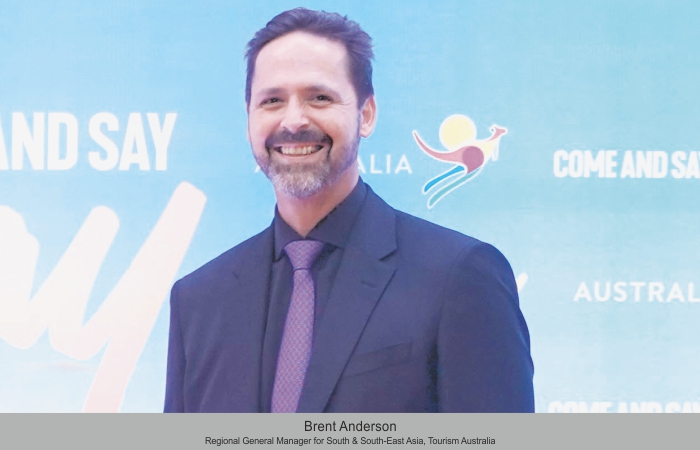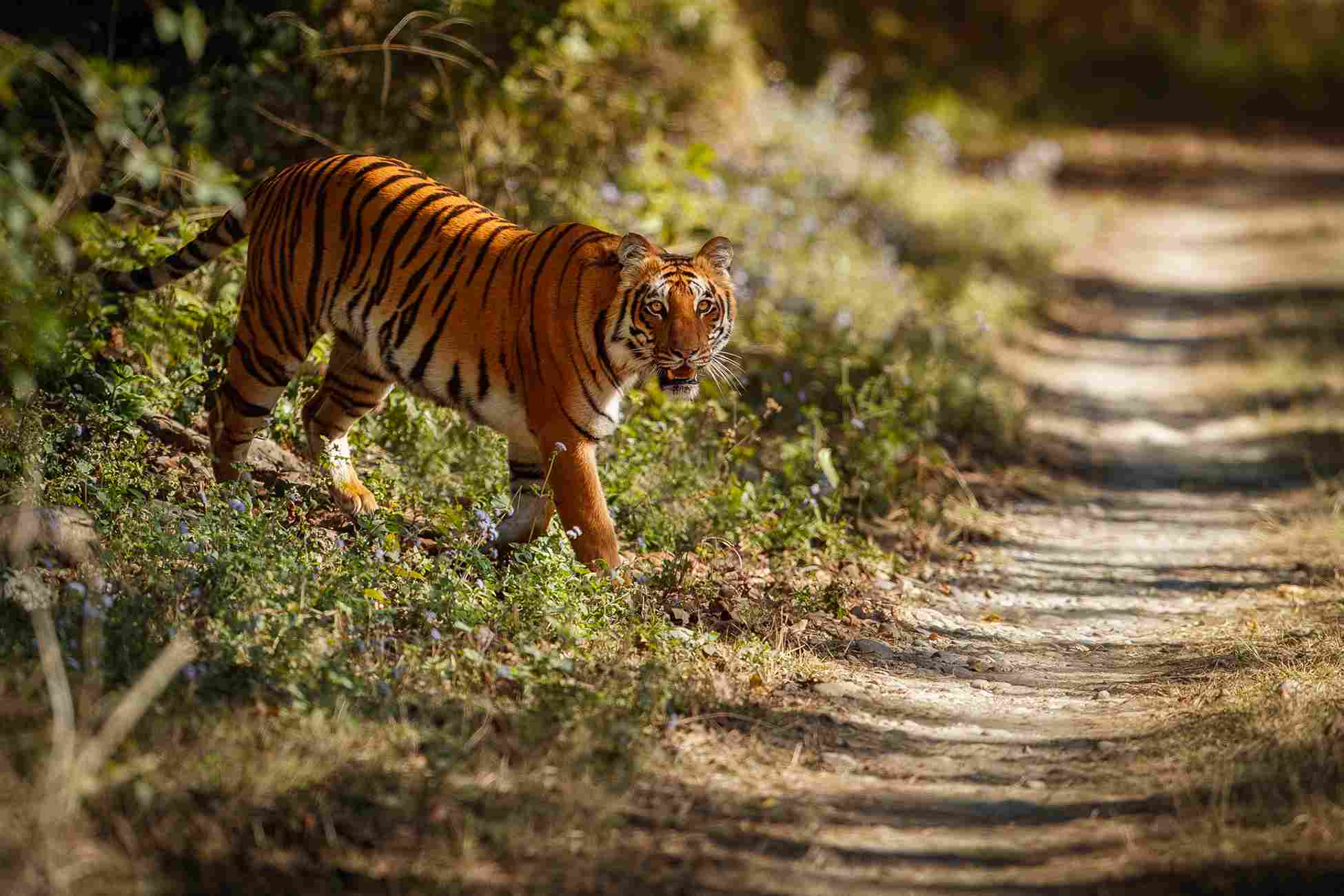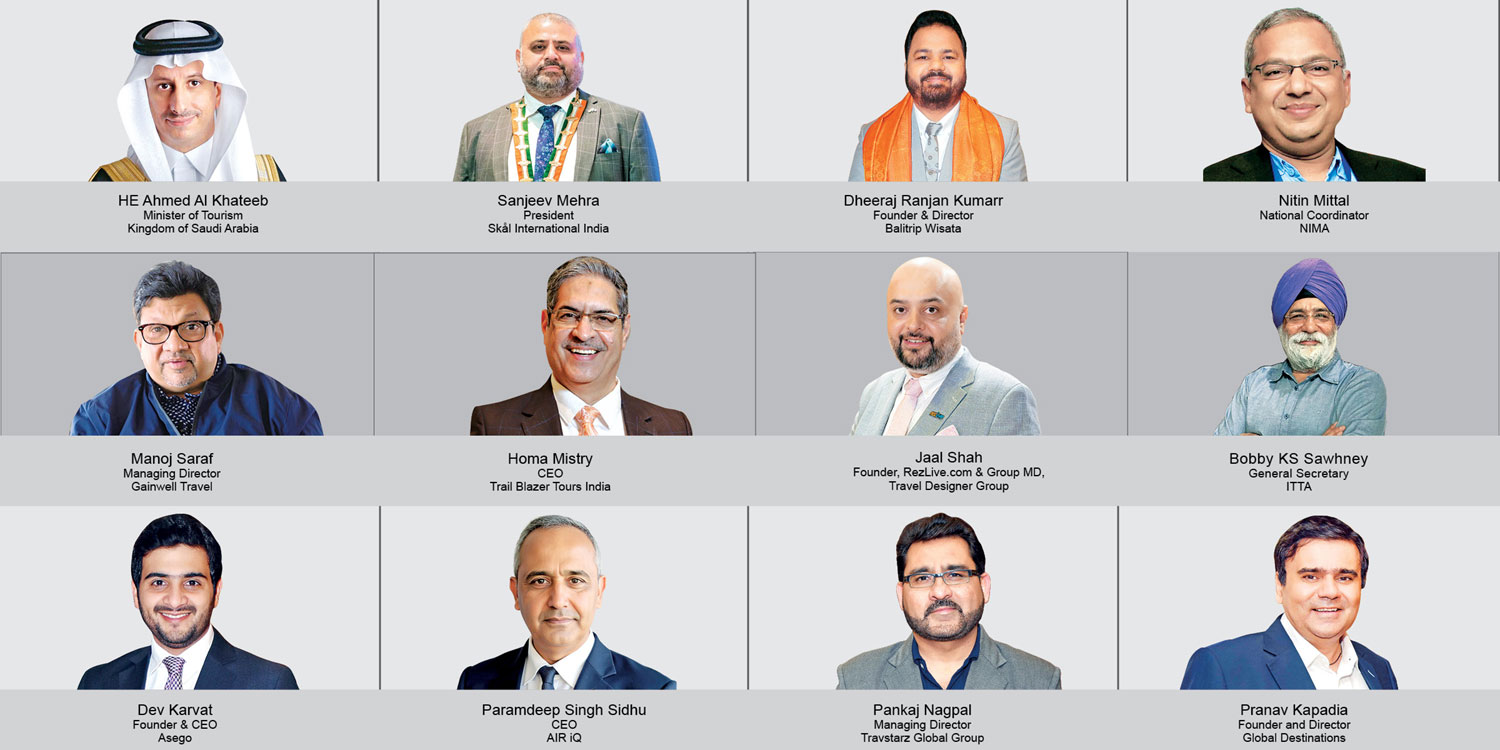Brent Anderson, Regional General Manager (South & South-East Asia), Tourism Australia, is excited to be leading the region, which is showing fast growth, led by the Indian market. He says he expects 10% growth of the pre-pandemic levels from the India market before June 2023.
Hazel Jain
Looking into the increasing number of tourists in Australia, Tourism Australia recently launched a campaign around the world, including in India, titled ‘Come and Say G’day’. Brent Anderson, Regional General Manager for South & South-East Asia, Tourism Australia, who was in India recently to launch the campaign, said, “The campaign uses major icons of Australia, and what we know that consumers around the world love. Ruby the kangaroo is our lead character, and she hops around our beautiful natural wonders, shows off our food and drink and invites everyone to come down and experience Australia for themselves.”
Speaking about the business from India, he said, “India is currently our fastest recovering market and in the last six years pre-COVID, it has been growing in double digits. In the last three years, it has been the fastest-growing market for us, and as we get more people-to-people links, and more aviation links, it will continue to grow and become a powerhouse of the Australian tourism industry. The nature of the Indian traveller that comes year-round specially now during the winters which is off peak season, really helps balance it out. I don’t like to say that one market is more important than the others because they all have their attributes. But in terms of the explorer market that disperses widely and stays for a decent length of time, I would say that the Indians are very much up there as a key market.”
Giving an insight into how well the market is growing, Anderson added, “Right now, we are tracking it at about 86 per cent of the pre-pandemic numbers. That reflects the fastest comeback to ground zero, which is 100 per cent of what we had in 2019. A really conservative forecast of what we should see by the end of June 2023, which is our financial year, is about 10 per cent growth out of the India market. This is while the other markets will still be going towards their respective pre-pandemic level numbers. So, it is pretty amazing to see how quickly India has rebounded, recovered and growing.”
Travel trends
Number one is sustainable tourism, says Anderson. “It is a massive touchpoint for consumers around the world. Other than that, people are also staying longer and spending more. They have pending leave from work. People call it revenge travel, but I see it more as a reward travel – in the sense of rewarding themselves for surviving COVID,” he said.
He also believes that indigenous, aboriginal and First Nation experience is really coming through and resonating well with travellers.
“It has a strong link to the sustainable message, but it is a spiritual message. The top three segments from India includes leisure, which is holiday and VFR, and education, which has a big role as well. We know when Indian students come to Australia, it usually generates about six visits from family. My message to the travel trade in India – come and say G’Day!” Anderson added.
Tourism Fact Sheet
- According to Australian Bureau of Statistics, India ranked as number two inbound market for Australia since the reopening of Australian borders as well as for the calendar year to August 2022 (Jan to Aug 2022) and year ended August 2022 (Sep 2021 to Aug 2022).
- Tourist visa lodgements at the Department of Home Affairs have been consistently over 30 per cent higher than 2019 levels.
- India will be the first inbound market to recover to 2019 levels. Indian arrivals to Australia for the period April to August 2022 are at 86 per cent of pre-Covid levels.
- ICC Men’s T20 World Cup offers a great opportunity with 18,000 to 20,000 supporters expected to travel to Australia to support team India.
- Signing of Tourism MoU between Australia and India for a five-year term (2022-27). Strengthening of the bilateral relations between Australia and India across tourism, education, trade and investment will ensure sustained growth over the medium to long term, thereby helping us achieve our vision to achieve one million arrivals by 2030.
 TravTalk India Online Magazine
TravTalk India Online Magazine





